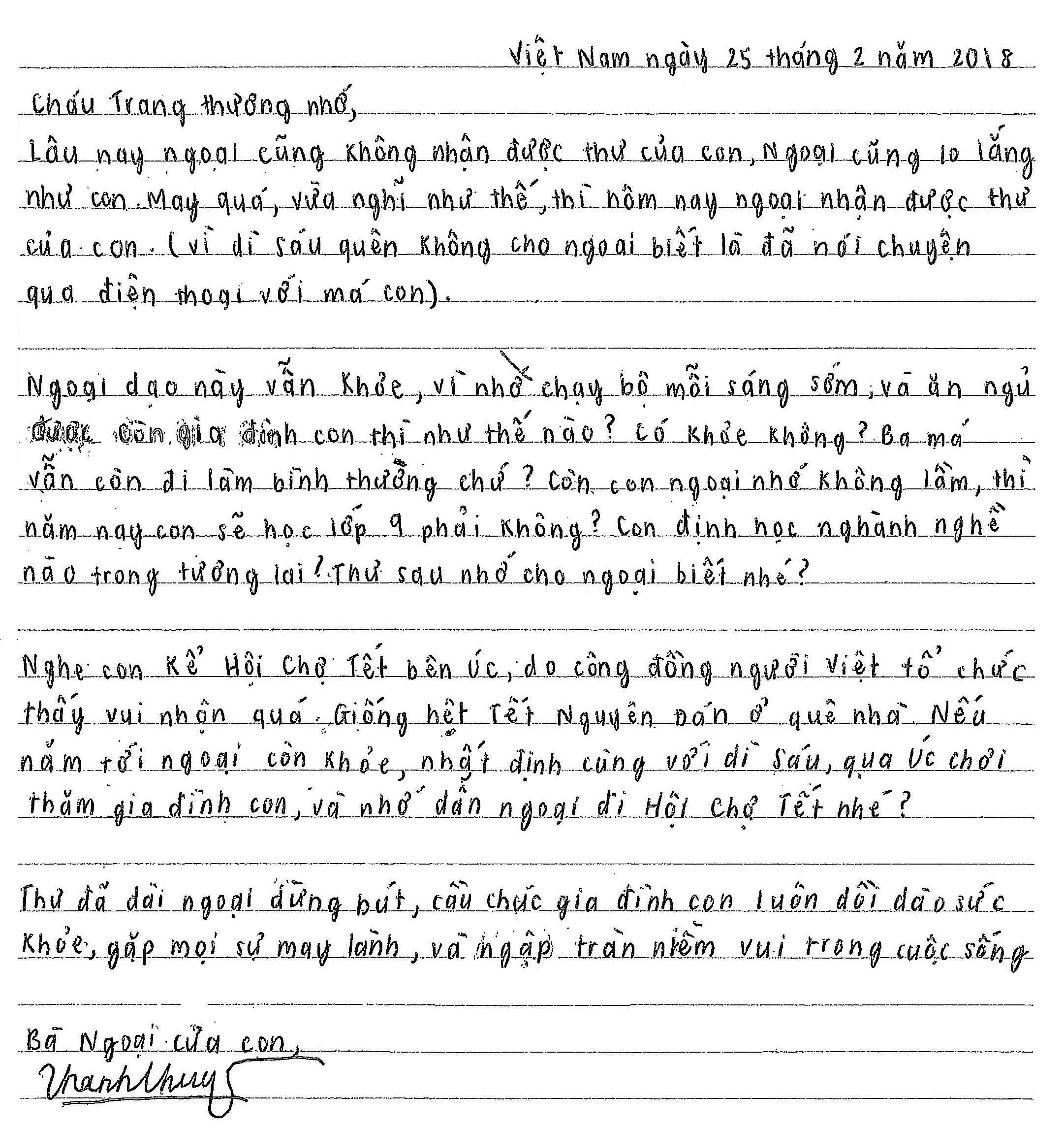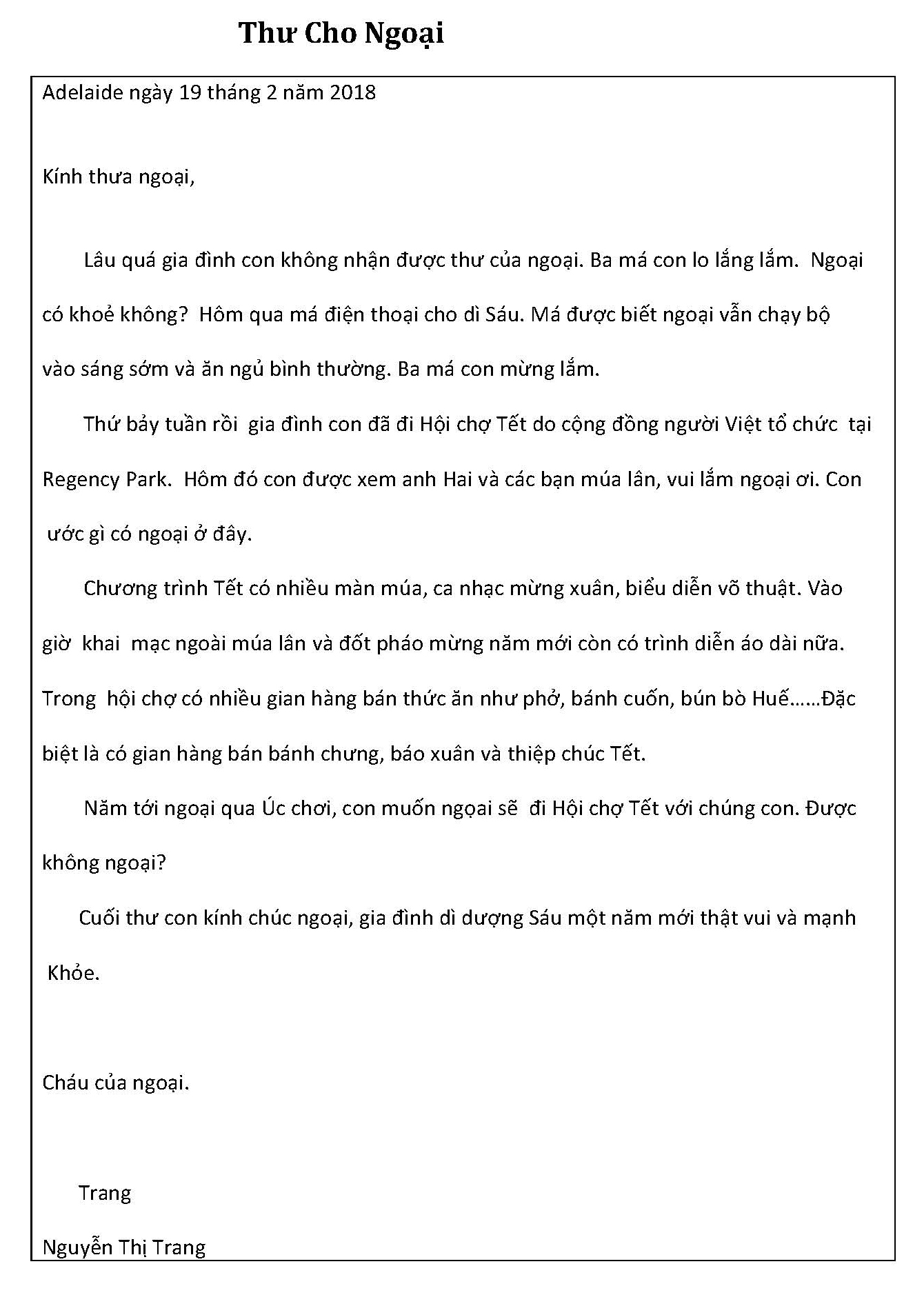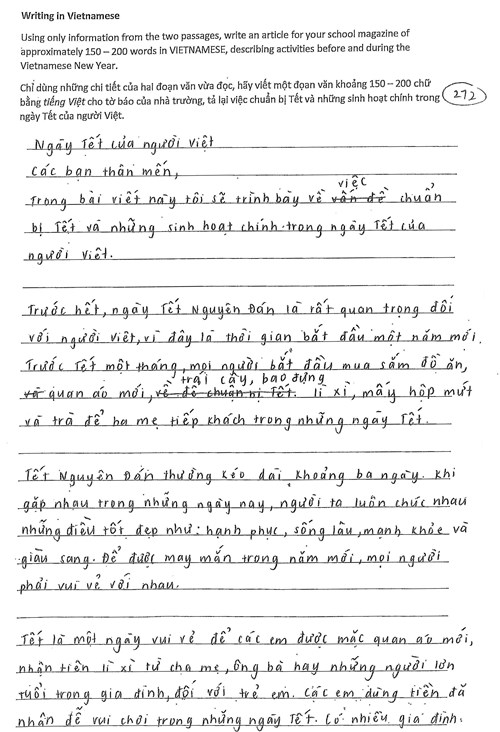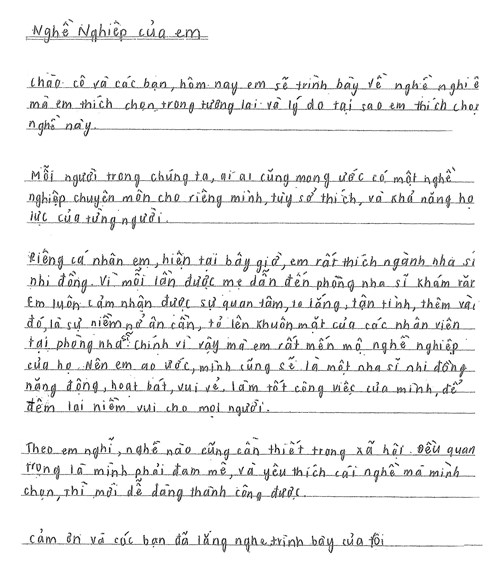By the end of Year 10, students use written and spoken Vietnamese to initiate and sustain interactions with teachers, peers and adults in familiar contexts, for example, Bạn thích nghe loại nhạc nào? Tôi thích nghe nhạc trẻ. Bạn thích ca sĩ và bài hát nào nhất? Tại sao? Tôi thích ca sĩ Lynda Miles vì cô ấy hát hay và nhảy đẹp. Bài hát tôi thích nhất là My Best Moments vì nó giúp tôi thấy vui vẻ và yêu đời. They use modelled and spontaneous language to engage in discussions, seek clarification, offer opinions, compare experiences related to familiar topics (for example, Học tiếng Việt có nhiều lợi ích lắm. Tôi thích đi du lịch ở ngoại quốc hơn là ở trong nước. Đồ ăn ở Việt Nam tươi và ngon nhưng không sạch sẽ bằng ở Úc), and express agreement or disagreement (for example, Bạn nói đúng lắm/Tôi cũng nghĩ vậy. Xin lỗi, tôi không nghĩ vậy/tôi có ý kiến khác với bạn). They interact with others to carry out transactions and to plan and organise social or cultural events by negotiating options, and explaining and justifying opinions, for example, Bạn muốn tổ chức sinh nhật ở nhà hay ở trường? Chúng mình nên tham gia gây quỹ để cứu trợ nạn nhân bão lụt. They apply appropriate pronunciation in spoken Vietnamese, including intonation patterns, tones and pauses. Students analyse information and ideas obtained from diverse sources, comparing and evaluating different perspectives related to common areas of interest and study. They present information and opinions using different text types and modes of presentation appropriate to a variety of audiences and to achieve different purposes. They share their responses to different imaginative texts by expressing preferences and describing key elements such as themes, values, plot, and representations of characters and events. They create imaginative texts for the purpose of self-expression and engagement, using cohesive devices such as conjunctions to communicate, link and extend ideas, and common Vietnamese idioms, proverbs or folk songs for illustration of cultural concepts or aspects. When writing, they use verbs to express modality (for example, nên, cần, phải), direct speech (for example, Ba mẹ nói với tôi: ‘Con nên chăm học’) and indirect speech (for example, Ba mẹ bảo tôi nên chăm học), and apply Vietnamese spelling rules and tone markers to a range of words. They translate and interpret texts using strategies to overcome challenges in translation, such as considering cultural expressions or representations, and explain differences in interpretation. Students create a range of multimodal bilingual resources for the school and local community. They explain the relationship between language, culture and identity, and modify language and behaviours in intercultural interactions to enhance mutual understanding.
Students infer the meaning of unfamiliar words encountered in a range of familiar contexts by applying knowledge of grammatical elements and vocabulary. They analyse the relationship between cultural representations, language choices, and the audience and purpose of different text types. They identify and analyse linguistic features of Vietnamese in a range of situations, explaining variations due to audience and purpose. They explain the impact of social, cultural and intercultural influences on language, identifying and using Vietnamese words that have emerged from globalisation, migration, popular culture and technology, such as toàn cầu hóa, di dân, định cư, hội nhập, nhạc trẻ, công nghệ thông tin, nhật ký điện tử, nói chuyện qua mạng. They explain ways in which language and culture are interrelated and influence each other.






